Cameras
Considerations Before Buying a New Camera
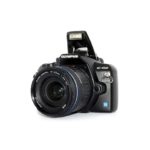
Shopping for a new camera can be an exciting moment for everyone, yet alone a photographer who comes to depend on their camera to make a living. However, with the overwhelming number of options available on the marketplace, it’s wise to take into account several influential factors when you are considering an upgrade or new purchase. Manual Controls and Modes Although just about all cameras offer some element of manual control, the ease with which one can access and leverage these settings varies considerably from camera to camera. With some cameras it is far easier to make the adjustments on the go, meaning you are saving time that could be utilised to capture a split second moment. In photography, seconds can make all the difference. At the other end of the spectrum, when times don’t call for manual input, it’s worth considering the variety among the pre-set modes available… | Read the full article
Prime vs Zoom Lenses
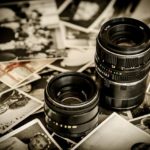
When it comes to having the right gear for the job, photographers still remain somewhat divided over which type of lens they should keep on hand. For the beginners out there, prime lenses are those with a fixed focal point, whereas zoom lenses allow zoom capability as their name would suggest. So while on the face of things it might seem more versatile to carry a zoom lens, the reality is that prime lenses have notable upsides. In effect, it would be remiss to think that the two don’t both have a place in your bag. Let’s look a little closer at each option. Prime Lenses Since prime lenses do not have any zoom capabilities, photographers are restricted in terms of framing photos how they would like. Because of this shortfall however, quality is generally considered to be superior between the two options – at least on a like for… | Read the full article
Golden Hour Photography

When it comes to photography, timing can make all the difference. Trying to nail that shot with a perfect balance of warmth, colour, intensity and depth is no easy feat. The golden hour, which covers the hours ‘immediately after sunrise and before sunset, is considered the most accommodating time of the day. The reason being, these are the moments where the soft glow of the sun provides a delicate warmth contrasted with striking shadows. Something that just can’t be matched or recreated artificially. Let’s look closer at this special source of light. Soft Warmth and Dimension Because the sun’s light is diffused through more of the atmosphere when emerging or descending, the light offers a warm, golden appearance. There are hues of yellow, orange and red which strike over subjects leaving a gratifying sight. This is particularly the case when it lights up a person’s skin, offering a soft… | Read the full article
Inserting Colour into Your Photography

When it comes to expressing colour in photos, many photographers opt to maximise this through post processing in the editing room. The reason being, it’s not uncommon to experience moments where you have sunny conditions but the colours appear looking washed out. What’s the trick to extracting colours from your surroundings and inserting them into your photos? As we detailed previously, the best time of the day for shooting is during the golden hour. Sunlight is soft and warm, whereas that during the middle of the day is a lot more harsh and desaturated. That’s also assuming the sun is on your side. If instead you’re faced with overcast conditions, the results may be even duller. With this in mind, you really should strive to capture your shots during the golden hour when light from the sun is diffused more due to the longer distance it must travel through the… | Read the full article
8 Things Photographers Hate
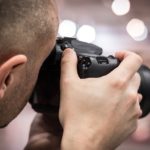
Photographers are generally considered a tolerant bunch. What with an endless number of amateurs devaluing the work of professionals, patience and persistence are defining traits of a successful photographer. Having said that, there are an assortment of things that make photographers want to tear their hair out. No doubt you’ve experienced some of these, or others, but let’s glance over the worst offenders. Hearing How ‘Easy’ it must be to Take Photos for a Living There’s nothing easy at all when it comes to being a photographer. Boundless competition, price pressure, difficulties securing long-term clients, a general underappreciation of the industry – the list goes on. But just because a photographer happens to follow their passion and enjoy what they do, it doesn’t mean it’s an easy job. Praise for Your Camera This one is all too common. Photographers should and do take great pride in their abilities… | Read the full article
An Outdoor Photographer’s Paradox
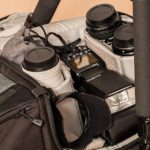
As a photographer, the tendency is to be prepared for every occasion. We learn throughout the early stages of our career that it is good business practice to be equipped with a wide range of photography equipment. We also come to realise that we shouldn’t be reliant on our photography gear, or seek to upgrade gear just for the sake of it. Instead, our artistic vision and creativity is more pertinent. However, despite this careful balance of judgement, there’s another paradox we should consider. Namely, our frustration with certain pieces of equipment that are designed to make our jobs easier. Let’s look at some of the biggest culprits, but also remind ourselves why we should persevere using them. Strobe Lights, Softboxes and Umbrellas In the studio, these items are akin to set and forget type instruments. Sure, they require tweaks and configurations, but their use is still fairly straightforward…. | Read the full article
Travelling With Your Photography Gear

As a professional photographer, getting around with all your equipment is no easy feat. Once you start to travel for work, or take your gear with you on your travels, this difficulty is only compounded further. Not only do you have to be mindful about packing fragile equipment, but you face constraints surrounding the size and weight of your luggage. However, despite these irritating factors, there are certain things you can do to reduce the inconvenience you face. What to Take Of course, deciding what to take depends on the exact nature of your trip and whether it is strictly for business, or pleasure as well. With that said, opt for versatility and functionality rather than taking every single piece of equipment in your possession. You’re better served by taking fewer lenses, ideally zoom lenses which are adaptable. What is sometimes overlooked from the packing process is cleaning materials…. | Read the full article
Tips for Macro Photography
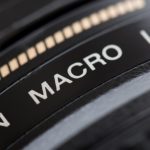
There are times where you just want to incorporate that little bit extra detail into your photos. Macro photography is the perfect approach, while also a thoroughly challenging and enjoyable experience. Naturally, the process is all about a close up, but is macro photography really as straightforward as that? No, not really, but take heed of these points and you’ll deliver impressive results. Use a suitable support If you’re using a regular lens, one of the difficult aspects when shooting close ups at ground level is ensuring the camera remains steady. Rather than trying to find a support for your hands or body, instead consider one for your camera. For example, specialty tripods or even cushions and beanbags can be great as props to minimise any movement. Similarly, where appropriate, you can use one of your hands or a purpose made device to steady the object that you are… | Read the full article
Tips for Low Light Photography

As any photographer would know, it’s important to be versatile. Not only with one’s style of photography, but for the conditions with which they work. This includes low light conditions, which may be attributable to shooting: outdoors at night, indoors, or where there are varying sources of low–intensity light on offer. What’s more, low light photography skills are necessary for a variety of photographers, including those working with portraits, weddings and landscapes. Of course, a flash would appear a logical solution to deal with low light conditions. However, it’s not necessarily a fix that works in every situation. You see, a flash device, particularly when integrated into a camera, can sometimes result in a flat looking picture by compressing image depth. There are also the complications that come with a flash being distracting to the subject of a photo, as well as the potential need to set up and configure… | Read the full article
4 Things to Avoid When Shooting Portraits

In just about every photographer’s career they try their hand at portraits. Whether it’s for personal or professional purposes, it’s a form of photography that can complement one’s skillset given its emphasis on lighting, composition and the like. However, despite being commonplace, it’s not unusual to see photographers make the same mistakes. Here are 4 things to avoid when shooting portraits. Distracting the viewer It might come as a surprise how many photographers try to incorporate too much external detail into their portrait shots. One of the biggest faux pas in this area is a ‘busy’ setting. While there are ways to incorporate a subject into a lively environment and still make them the focal point of the shot, it’s far from easy. Playing it safe and blurring the background via depth of field, or opting for neutral backgrounds is a sure way to maintain the viewer’s attention. Alternatively,… | Read the full article
